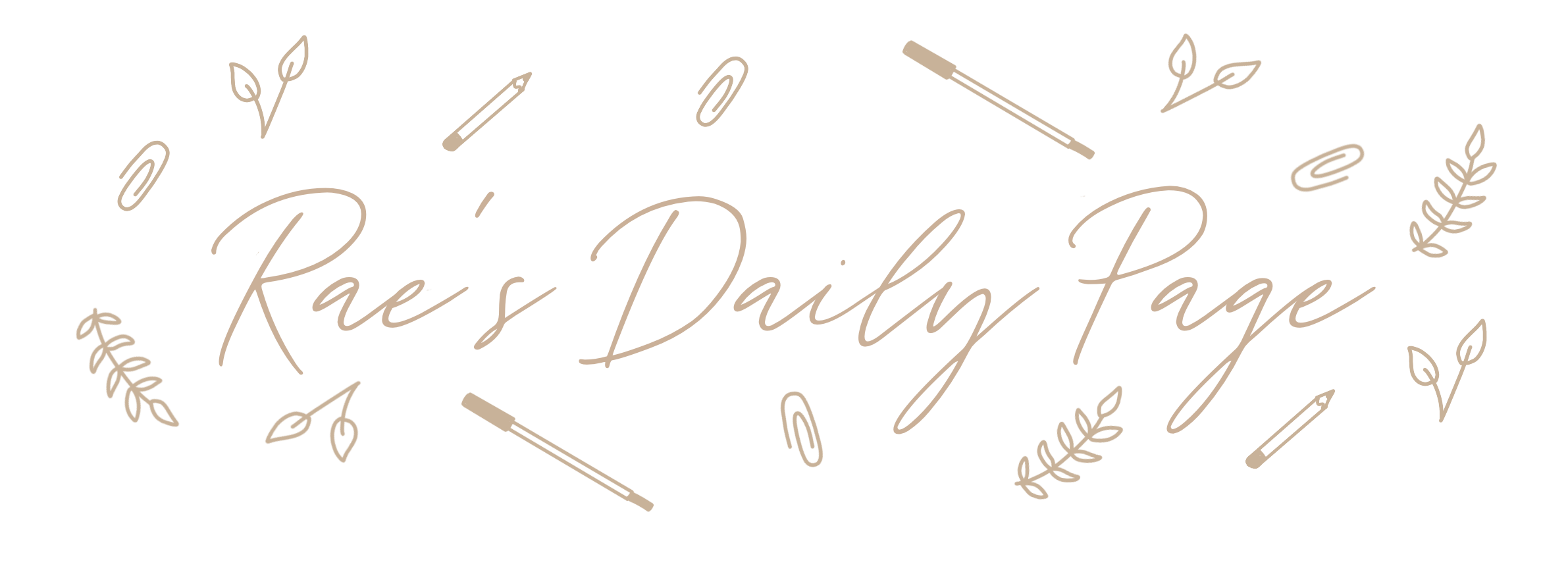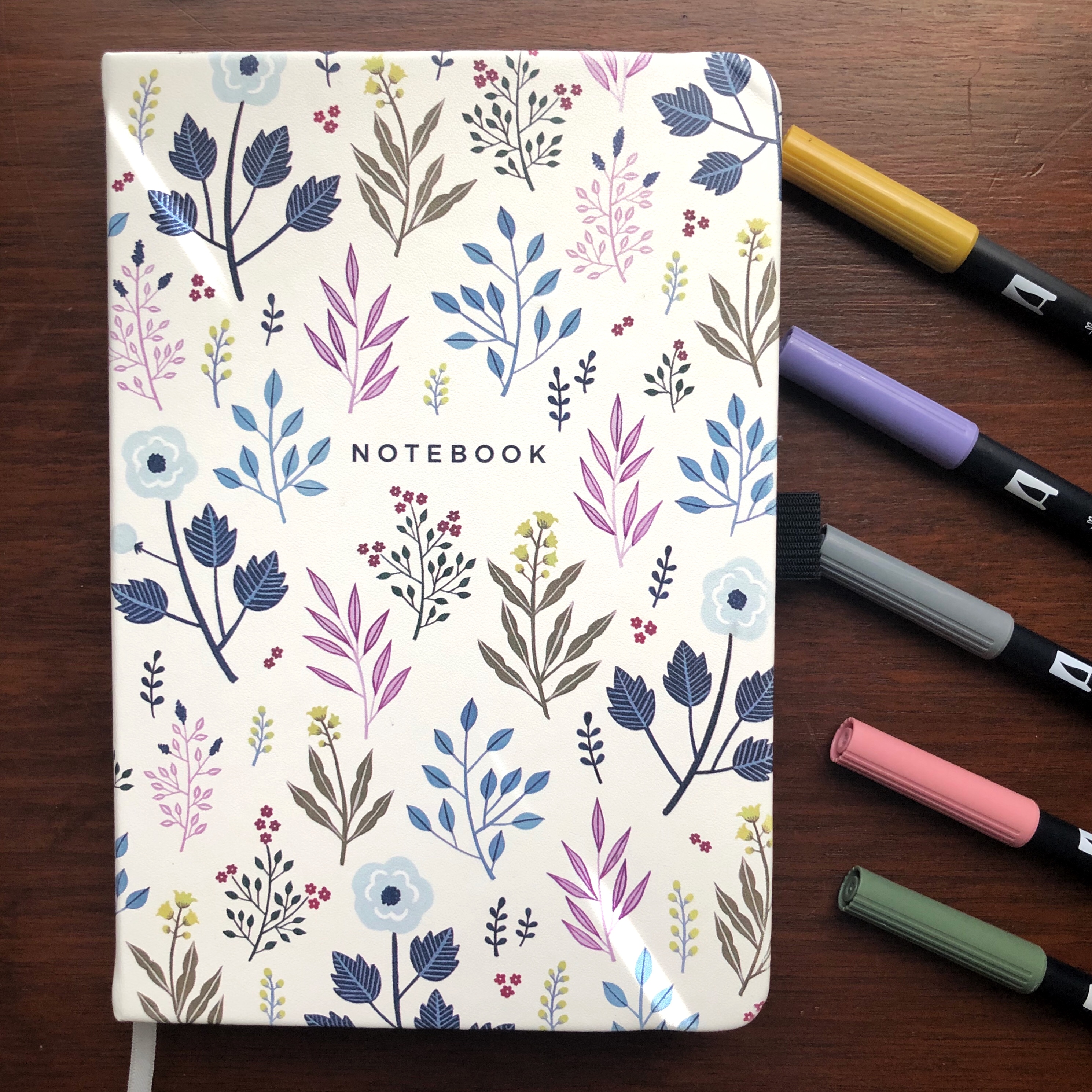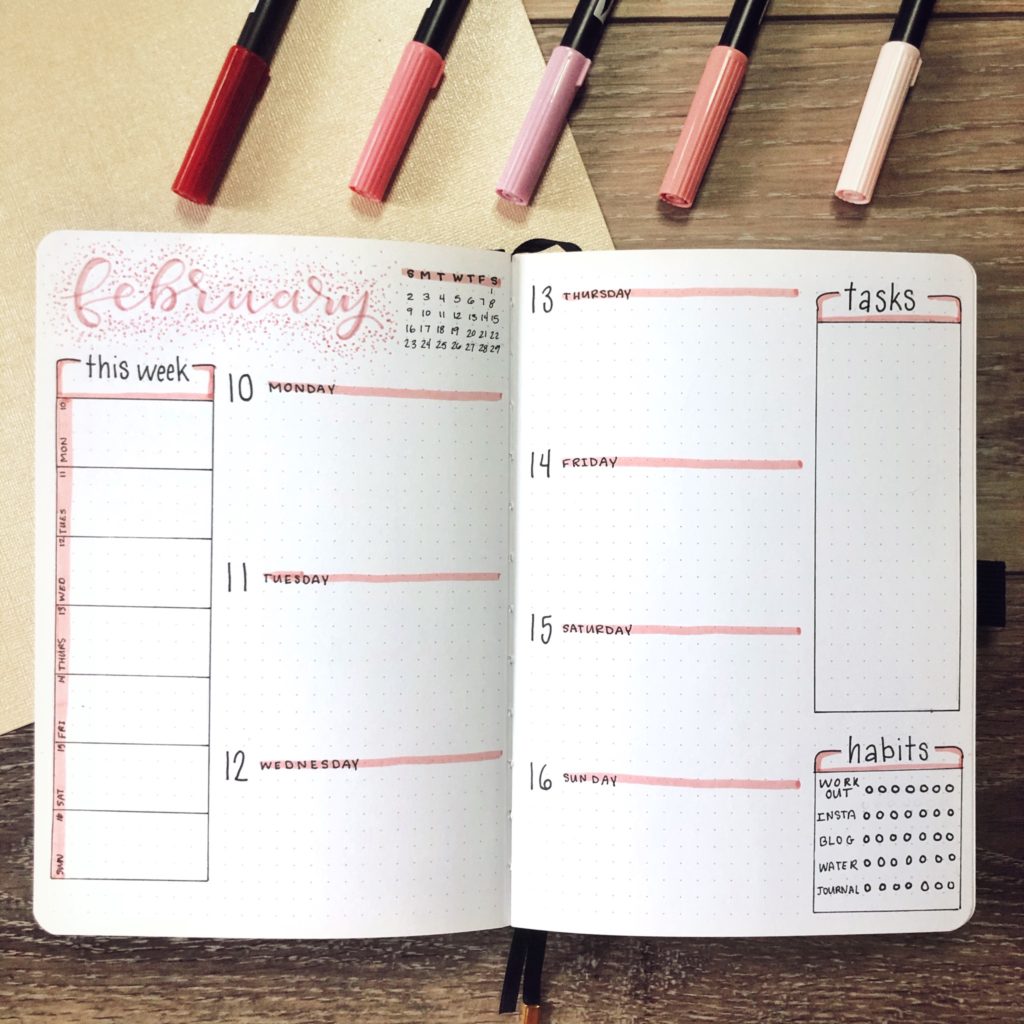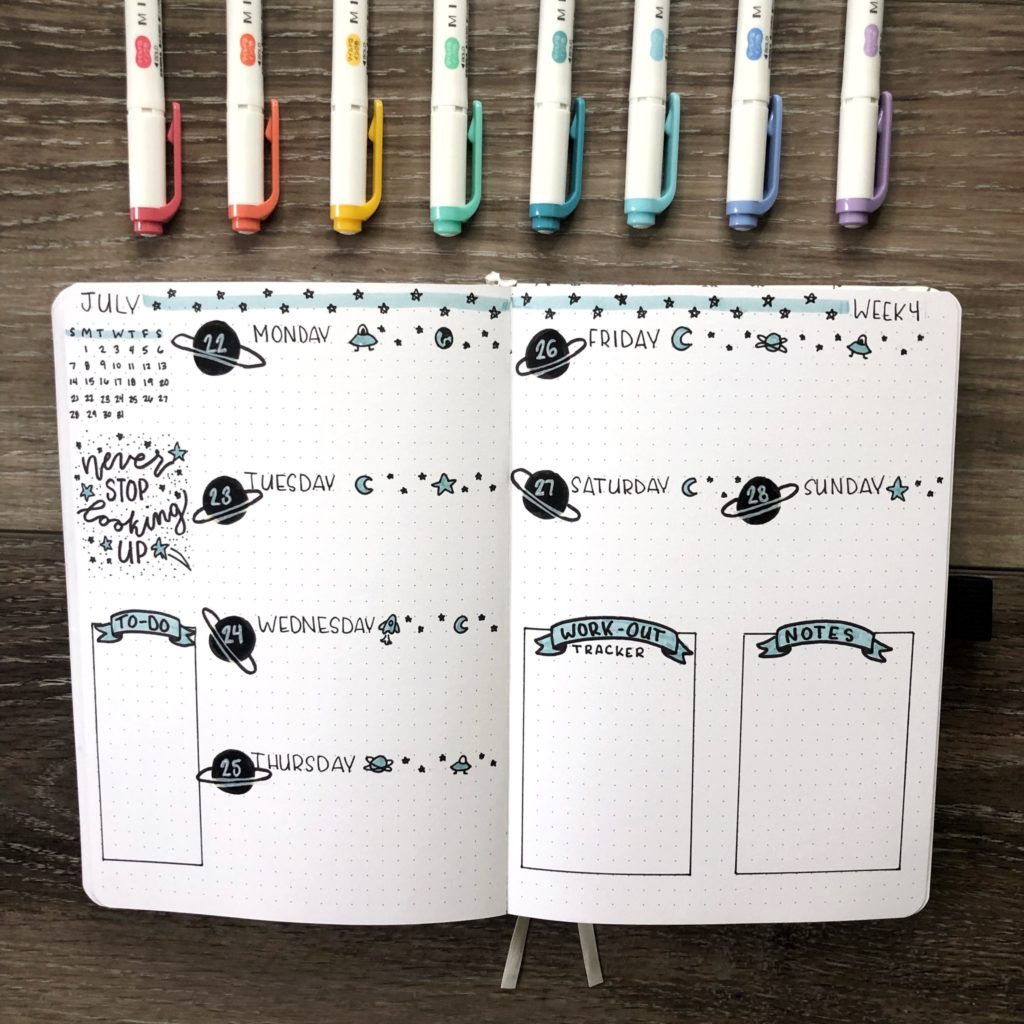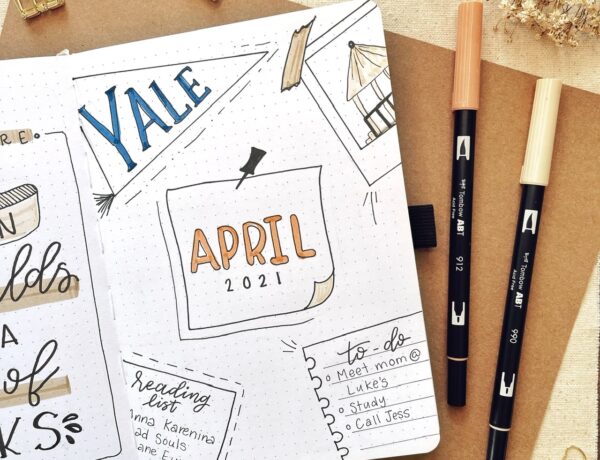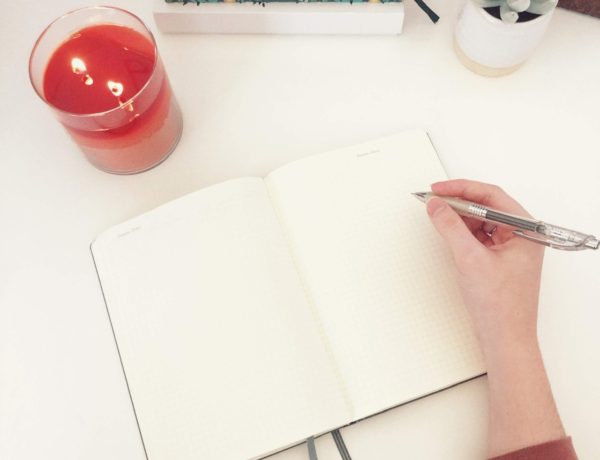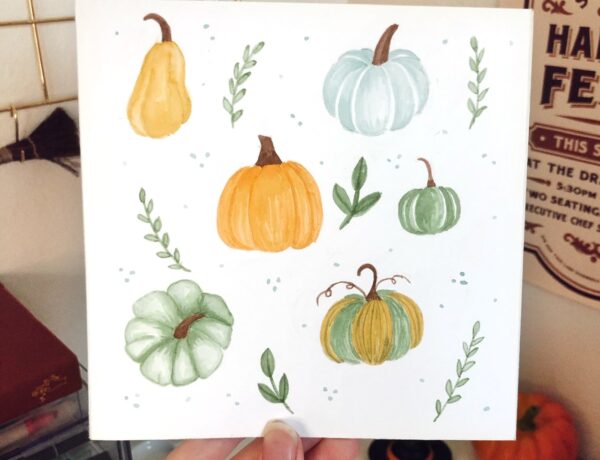*This post contains affiliate links. If you make a purchase through a link, I may make a small commission at no additional cost to you.
What is a Bullet Journal?
A Bullet Journal is a system that was created by Ryder Carroll. It combines the features of a planner, calendar, and daily diary all into one book. Essentially, you use a system of bullets to keep track of tasks, events, notes, etc. The different sections include, an index, a future, a monthly log, a daily/weekly log, and collections. You can read more about the original Bullet Journal system here.
What I Do Differently
The original bullet journal is an awesome system that promotes productivity with little distraction, but bullet journaling has evolved quite a bit. Bullet journaling become a way for people to express their creativity and track life’s big moments, while still being useful at planning the future and day-to-day tasks. One thing I’ve never done is used a key. I’ve always found it difficult to keep track of what each symbol meant and using them consistently. Instead I usually opt to use regular check lists and I’ll migrate tasks I don’t complete.
I also enjoy adding creative aspects to my journal. I pick a different theme for each month and add quotes and doodles to go along with it. It makes the planning part more fun when you have pretty pages to look at. And it’s a way to make your journals YOURS.
Right now I use my bullet journal for: future logs, goal setting & tracking, monthly logs, weekly logs, and various collections. But there was a point when I only kept monthly logs and there was also a time when I kept daily logs. That’s the thing, you can change your system as your needs change.
What Does This Mean for You?
Basically, there is no one right way to keep a bullet journal. Whether you strictly follow Ryder Carroll’s method, my method, or create your own totally different method, it doesn’t matter! The whole point is to custom tailor a method of organizing your life in a journal. The only way you’ll keep it up (and see results) is if you make it work for your needs. This will probably take some trial and error in the beginning until you find a method you love.
The Basic Bullet Journal Spreads
My spreads change every month, so these are just examples to give you an idea what they could look like. The functionality is always the same, but the format changes constantly
Future Log
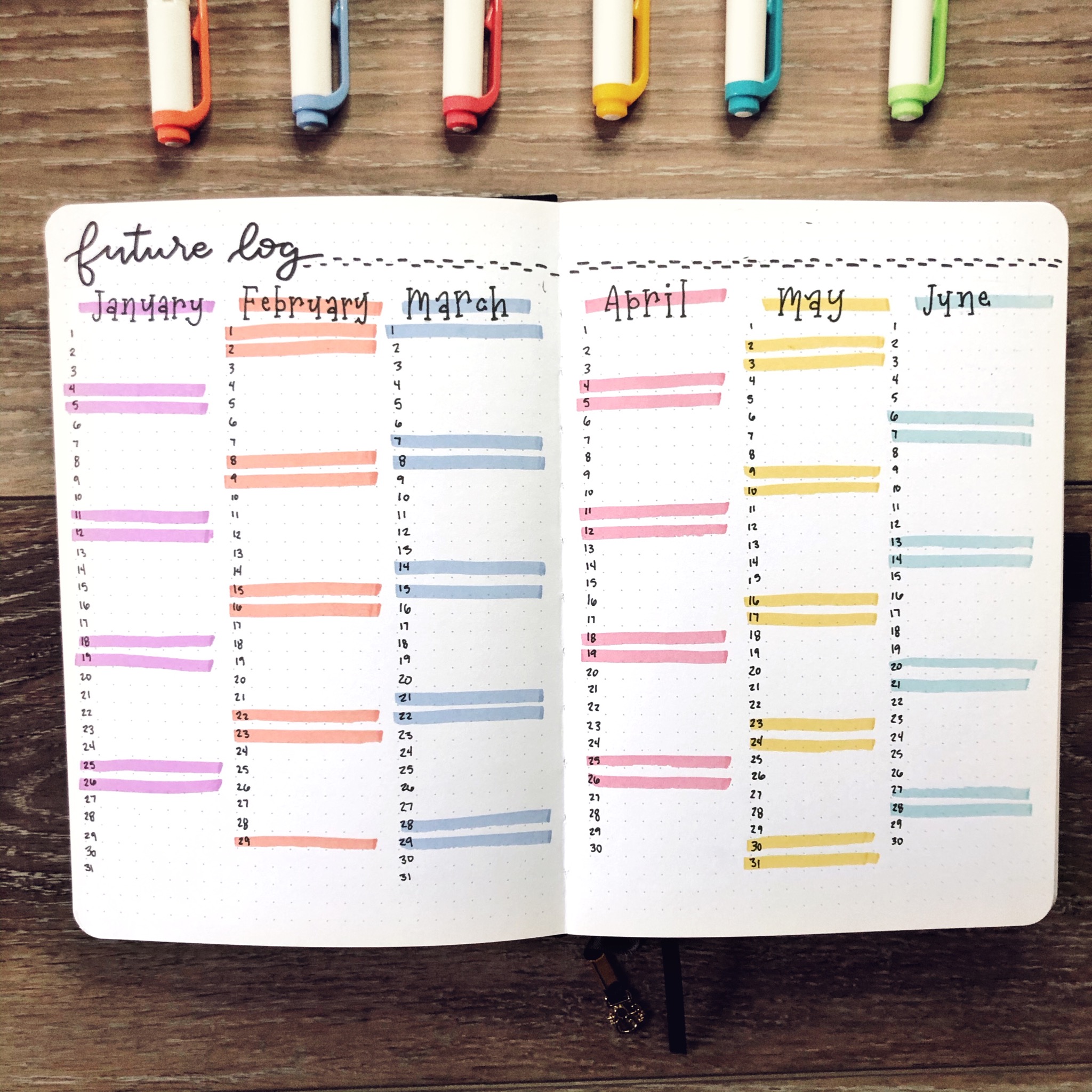
Monthly Spread
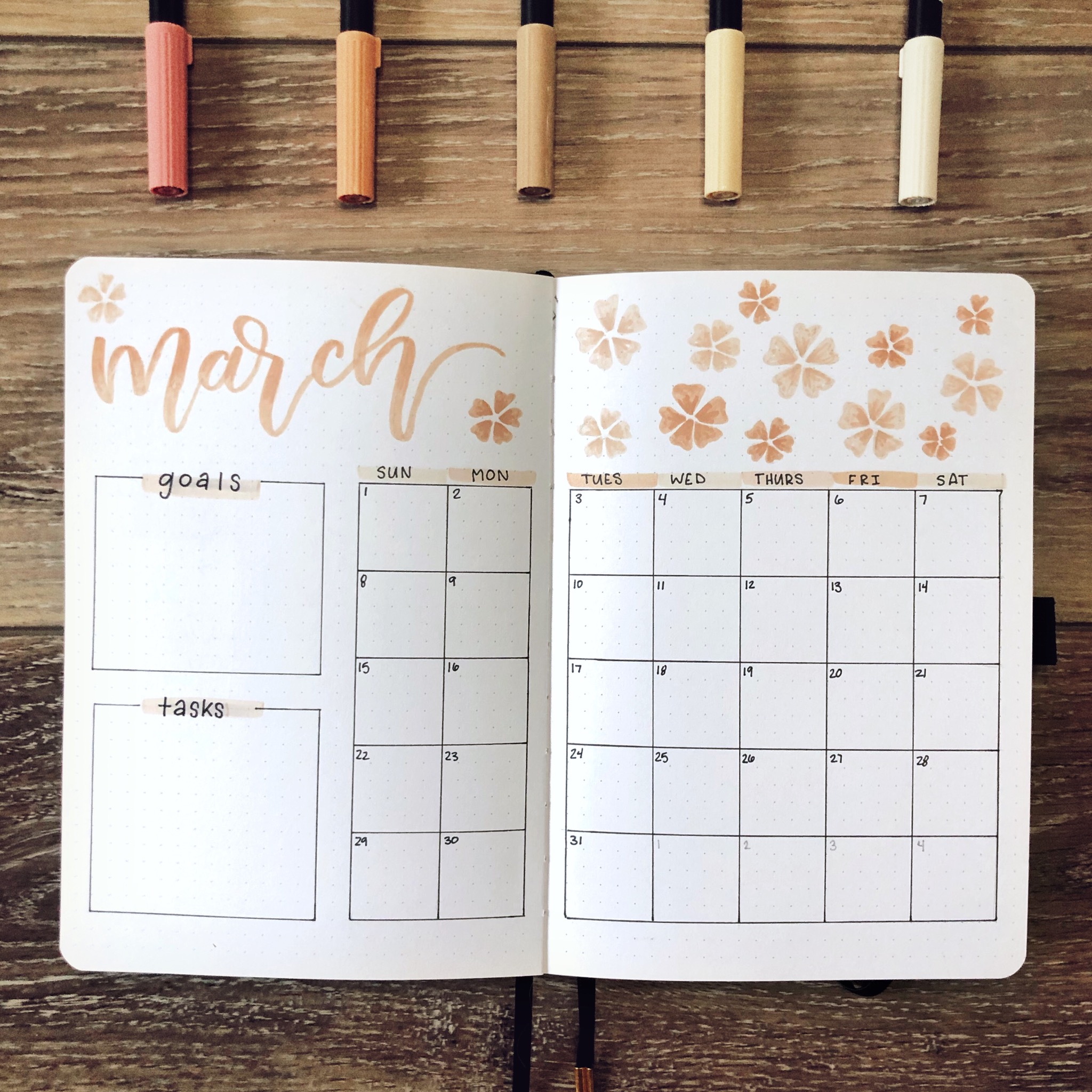
Weekly Spread
Additional Bullet Journal Spreads
Quote Pages
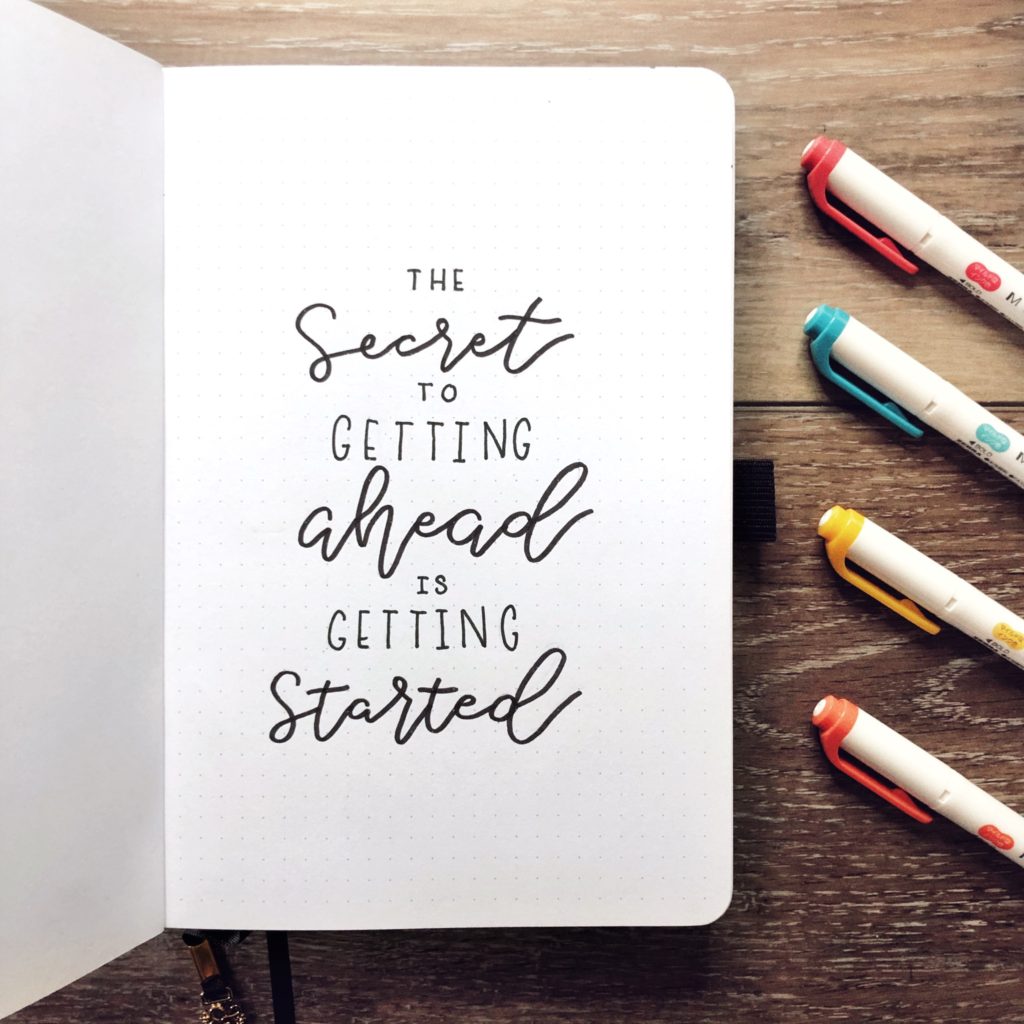
Habit Tracker
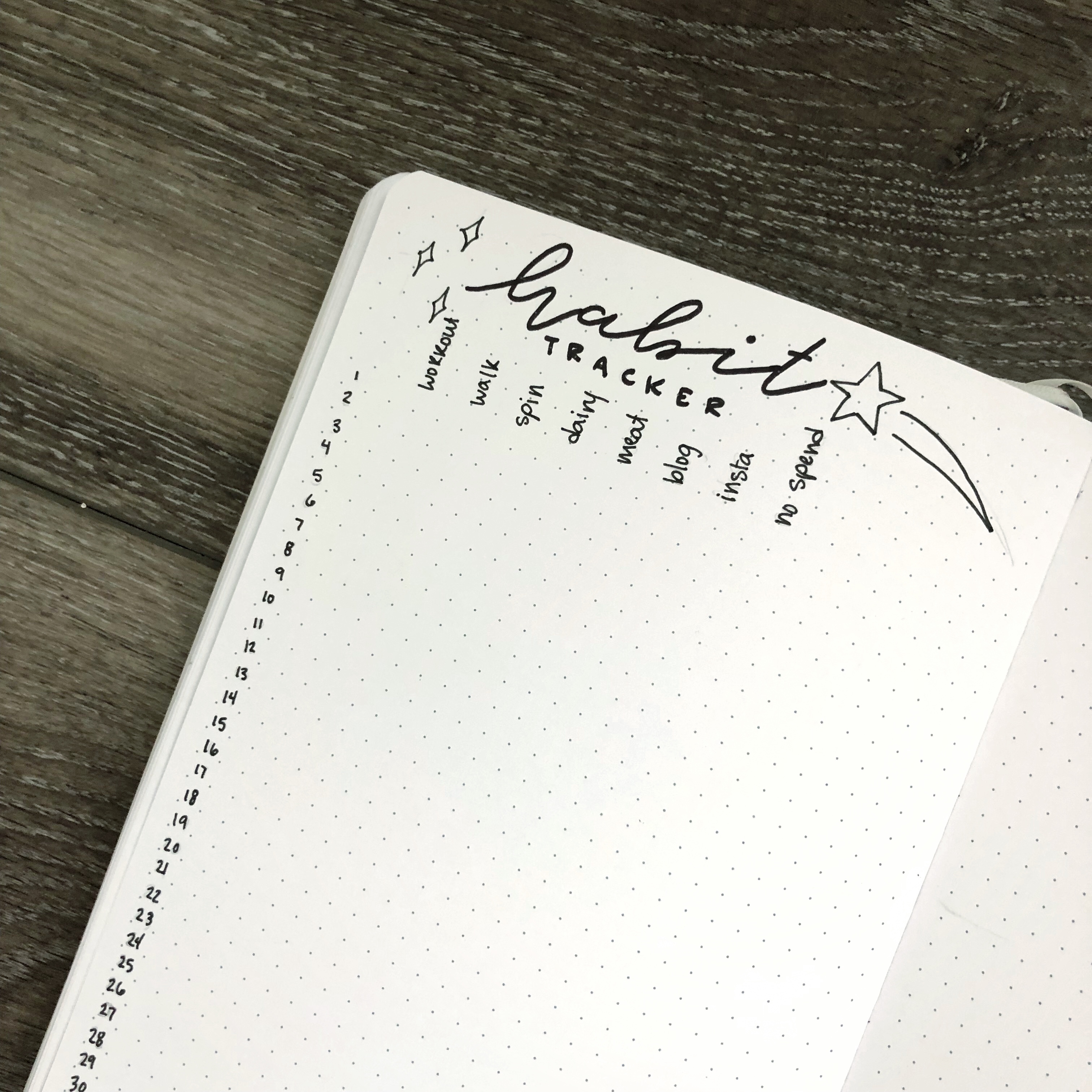
Meal Planner
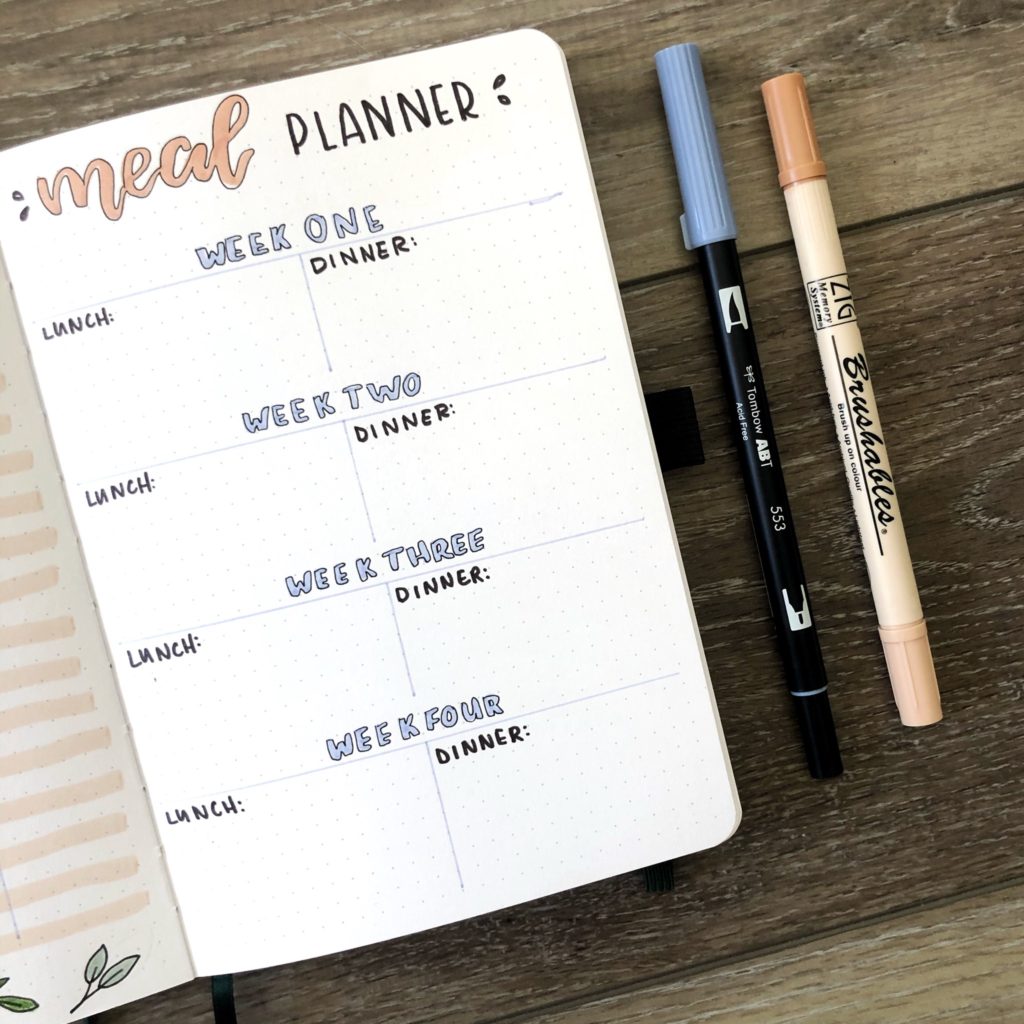
Wishlist
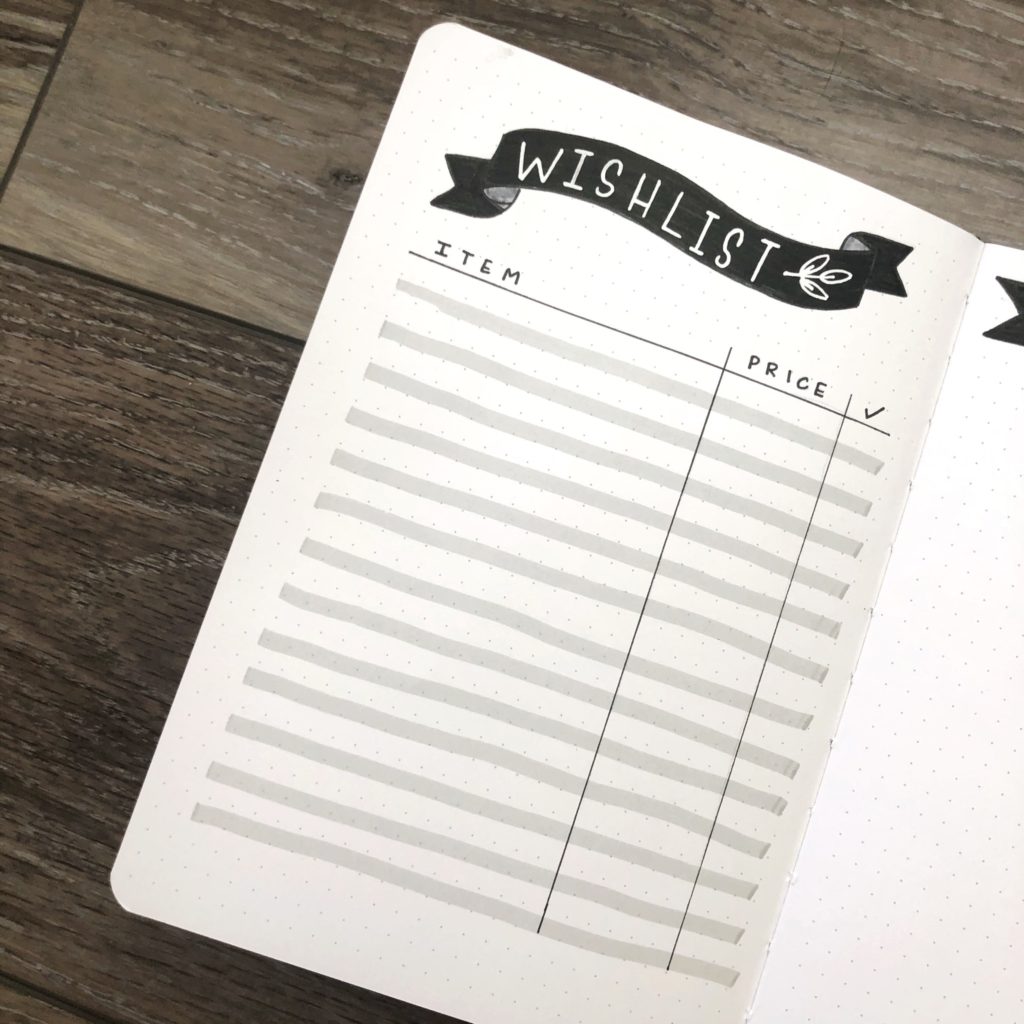
*If you want more bullet journal ideas, check out my bullet journal category here.
What Do You Need to Get Started?
Of course this is greatly going to depend on what you hope to get out of your bullet journal. If all you want from it is the functionality of tracking your life with no extra frills, all you need is a notebook and a pen. But if you’re like me and you love all things stationery, you might want a little more. In my opinion, the stationery is what makes it so addicting.
Dot Grid Journal
My current notebook is Archer and Olive and I love it. Use the code RAE10 to save 10%. You can read my full review for it here.
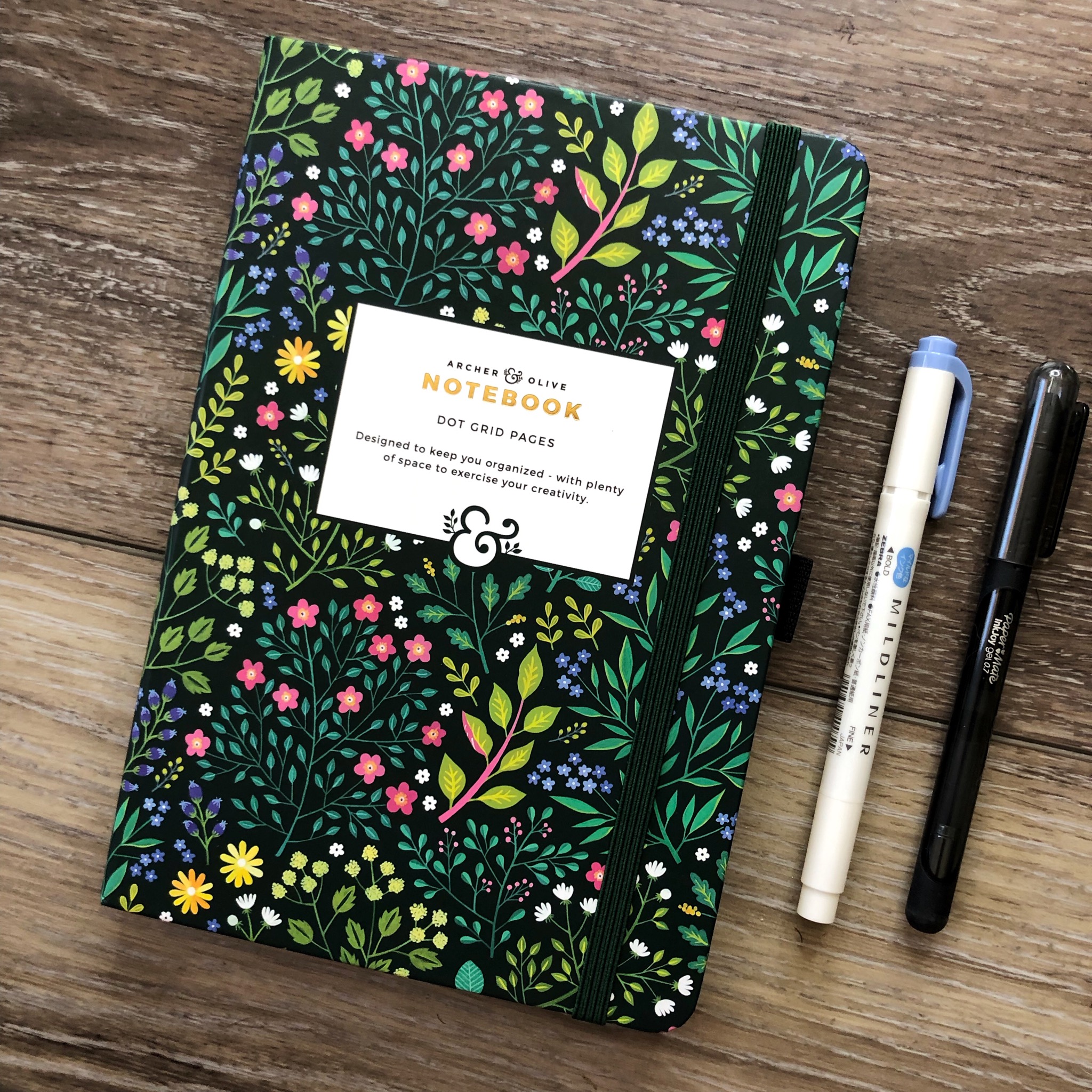
My previous journal was the Rhodia Webnotebook. It was great for fountain pens and I really loved the paper quality. The only downside is the pages were more of an ivory than a bright white.

I have two Leuchtturm1917 notebooks that I use primarily for journaling and practice spreads. I’ve never used one as my official bullet journal because the paper is too thin for my liking, However, I really enjoy the quality of the paper when I’m not using the backsides, so if a little ghosting doesn’t bother you it’s still a great notebook for a bullet journal. I mean, there’s a reason it’s the original and most popular choice.

Pens
I recently switched to Staedler Pigment liners and they’re definitely my favorite fineliners. I find the ink to be blacker than the Microns and the lines look more crisp.

However, Pigma Microns are still a solid choice for fineliners. I’ve used them for over a year and my only complaint was they sometimes didn’t appear totally black. The good thing about them is their availability. You can find them at just about any craft store.

These white gel pens will come in handy more than you can imagine. You can use them as white-out for small mistakes, to add a pop of white to hand-lettering, and to write on top of black headers.

One of the perks of having a journal with great paper quality is you can use fountatin pens without feathering or bleed-through! These are the two fountain pens I have. They’re definitely starter pens, so they’re on the cheaper side, but the quality is still great. And they both come in a million different colors.


Pencils
You can really use any pencil you have laying around your house, but these are my two favorites. They’re a bit of an upgrade from a plain ol’ #2 Ticonderoga.


Markers
Tombow Dual Brush Markers are probably the most popular bullet journal supply there is, and for good reason. They’re awesome! They come in 108 different colors, can be used as watercolors, and are super easy to blend.

Another popular Tombow product is the Fudenosuke pens. These as great for smaller brush lettering. For the longest time they were only available in black, but they recently came out with 10 colors!


Crayola SuperTips are also very popular in the bullet journal community. The biggest positive is the price. They’re super cheap and you can buy them almost anywhere. And did you know you can actually use them to create calligraphy?

Practice Materials
One of the best things I did to improve my bullet journal was learning calligraphy and handlettering. I’ve now been doing calligraphy for over three years- it definitely takes practice! You can purchase my Guide to Modern Calligraphy and Handlettering in my shop. It’s perfect for beginners because I go over all the basics and everything you need to know! But it’s also great for some additional practice. The guide includes all three of my styles- Big Brush Calligraphy, Small Brush Calligraphy, and Monoline handlettering
I highly recommend this paper to practice calligraphy on, and print your guide on! It’s great for practicing with fountain pens, brush markers, and anything really. It’s smoother and thicker than normal copy paper. And a ream of it will last forever.

You might also consider getting a second journal just for practicing spreads, calligraphy, and hand-lettering. It’s a great excuse to buy a couple notebooks and only use your favorite for your bullet journal without wasting the others.
Everything Else
This might be one of my favorite supplies. They make adding a wash of water color to your journal SO EASY. You just fill them up with water and use them the just as you would a regular brush.

A good eraser is an absolute necessity. Not only will you make mistakes, but you’ll probably also sketch out pages in pencil and want to erase those lines after you’ve gone over them with ink. This is my favorite eraser I’ve found. It gets rid of every trace of pencil line.

Whenever you want to paste something into your journal (photos, receipts, ticket stubs, anything), you’ll need either a good glue stick or some strong double sided tape. These are my go-tos.


Recap
A bullet journal is a totally customizable system that meshes together a planner and a daily diary. It can be as simple or as elaborate as you want. No two bullet journals will ever be exactly alike, and that’s what makes it so great. It’s something that it created completely by you. You’ll be able to see yourself progress as you complete your bullet journal. Your hand-lettering, your doodles, your painting, it will all improve over time. You’ll also see the progress you’ve made as a person. You’ll complete weight loss trackers, savings trackers, Instagram trackers, gratitude logs, etc. There’s something very special about looking back at your year carefully documented in a bullet journal.

